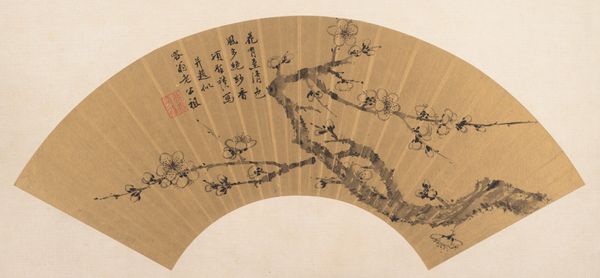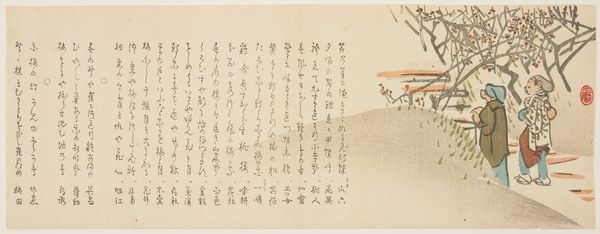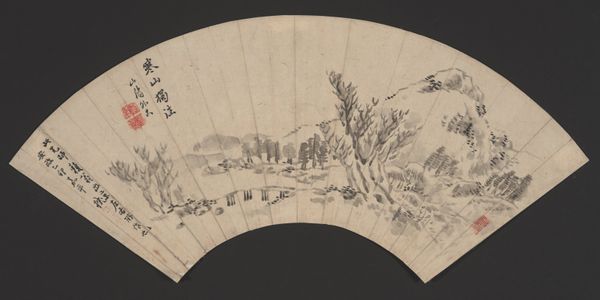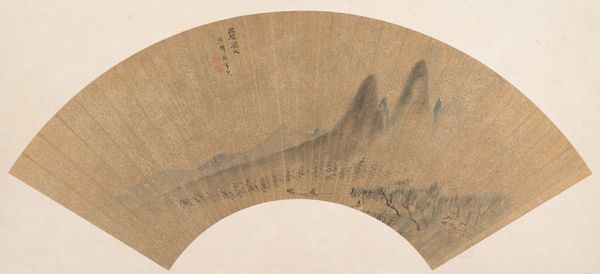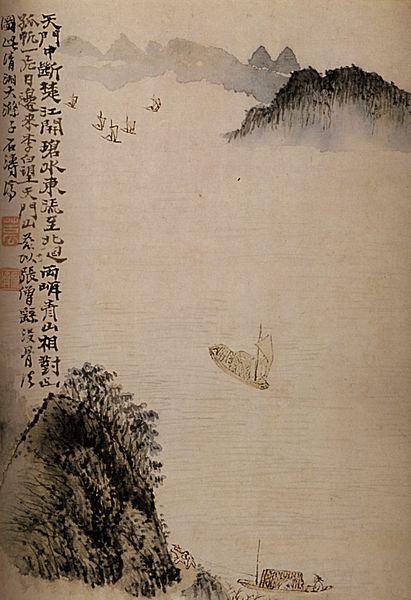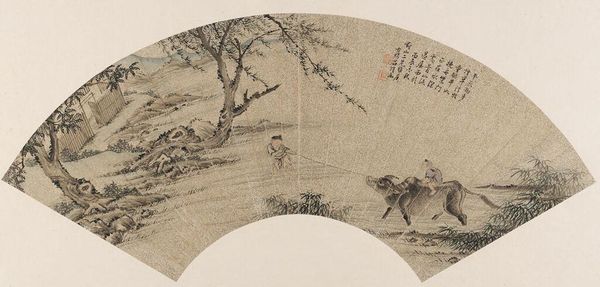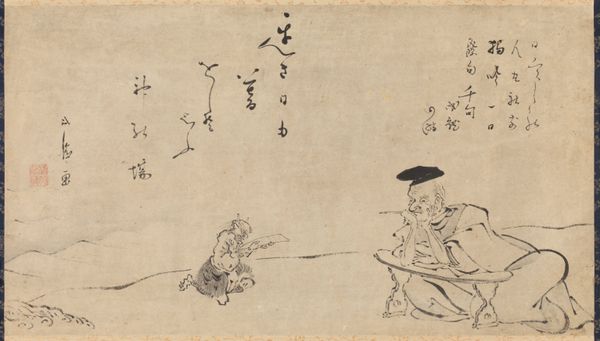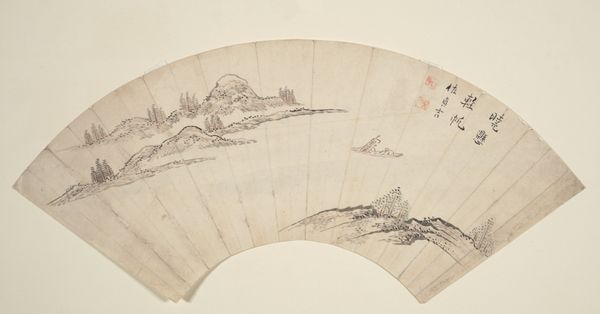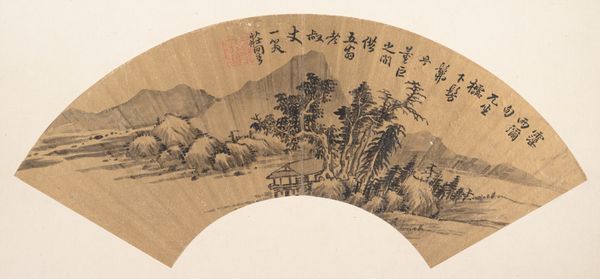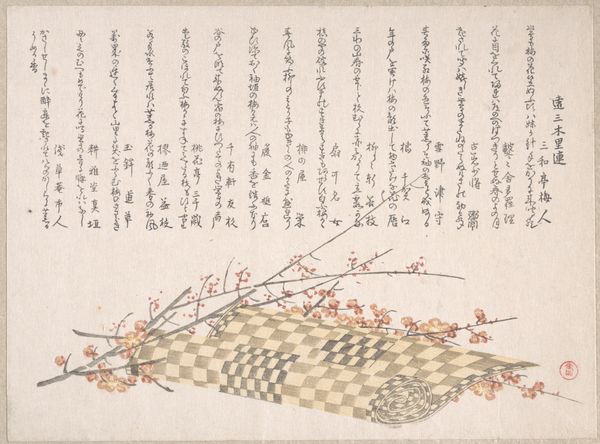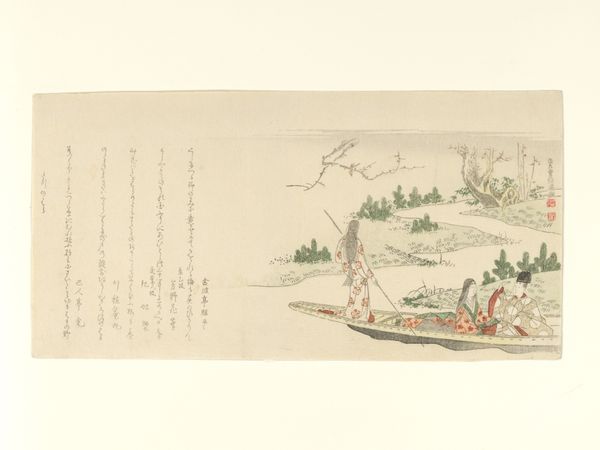
Dimensions: 8 1/2 × 17 1/2 in. (21.59 × 44.45 cm) (image)
Copyright: Public Domain
Ike Gyokuran painted ‘Akashi Bay’ on paper, an undated work that captures a scene imbued with cultural significance. Here, the landscape is not merely a backdrop but a vessel of meaning. Note the recurring motif of the distant boats; symbols of journeys, departures, and the human connection to nature, mirroring the transient nature of life itself. Consider how such motifs reappear across cultures. From ancient Egyptian funerary boats carrying souls to the afterlife to the ships in Romantic paintings symbolizing man's struggle against the sublime, boats carry profound cultural weight. Gyokuran’s boats evoke a sense of longing and introspection, linking Akashi Bay to the universal human experience of navigating the waters of life. This image taps into our collective memory, stirring something deep within us. Like a dream, it resonates with the primal emotions tied to our ancestors' voyages, inviting us to contemplate our own journeys. The fan's delicate landscape is not just a visual representation but a powerful symbol, evoking emotional states and mirroring subconscious yearnings, resurfacing through time.
Comments
minneapolisinstituteofart almost 2 years ago
⋮
Gyokuran depicts a Japanese scene, one that she likely observed first-hand, rather than an idealized and imagined Chinese landscape. Her subject, Akashi Bay, is a well-known fishing village in present day Hyogo prefecture, best known for its octopus. This fan is typical of Gyokuran's oeuvre—small in format, and lacking in great drama, but rich in refinement, finesse and tranquility. Gyokuran follows a long tradition of combining text and image, but in using waka poetry for her inscription she further evolves literati painting along Japanese lines. The image dominates the right side of the fan, while the text is prominent on the lift, with a harmonious overlap in the middle. Each line of calligraphy is neatly ordered within a band of the fan between the bones, the text thus following the curve of the fan. In contrast the struts of land break away from this compositional device by jutting out at near perpendicular angles. The pine-covered strips of land are painted with a wet, flat brush, contrasting with the finer, more delicate and drier brushwork used for the inscription. The mood set by the poem is echoed in the painting. Using atmospheric perspective, Gyokuran depicts a poignant image of the loneliness of a cold autumn evening as distant fishing boats sail away, the suggestion of loved ones left behind.
Join the conversation
Join millions of artists and users on Artera today and experience the ultimate creative platform.
